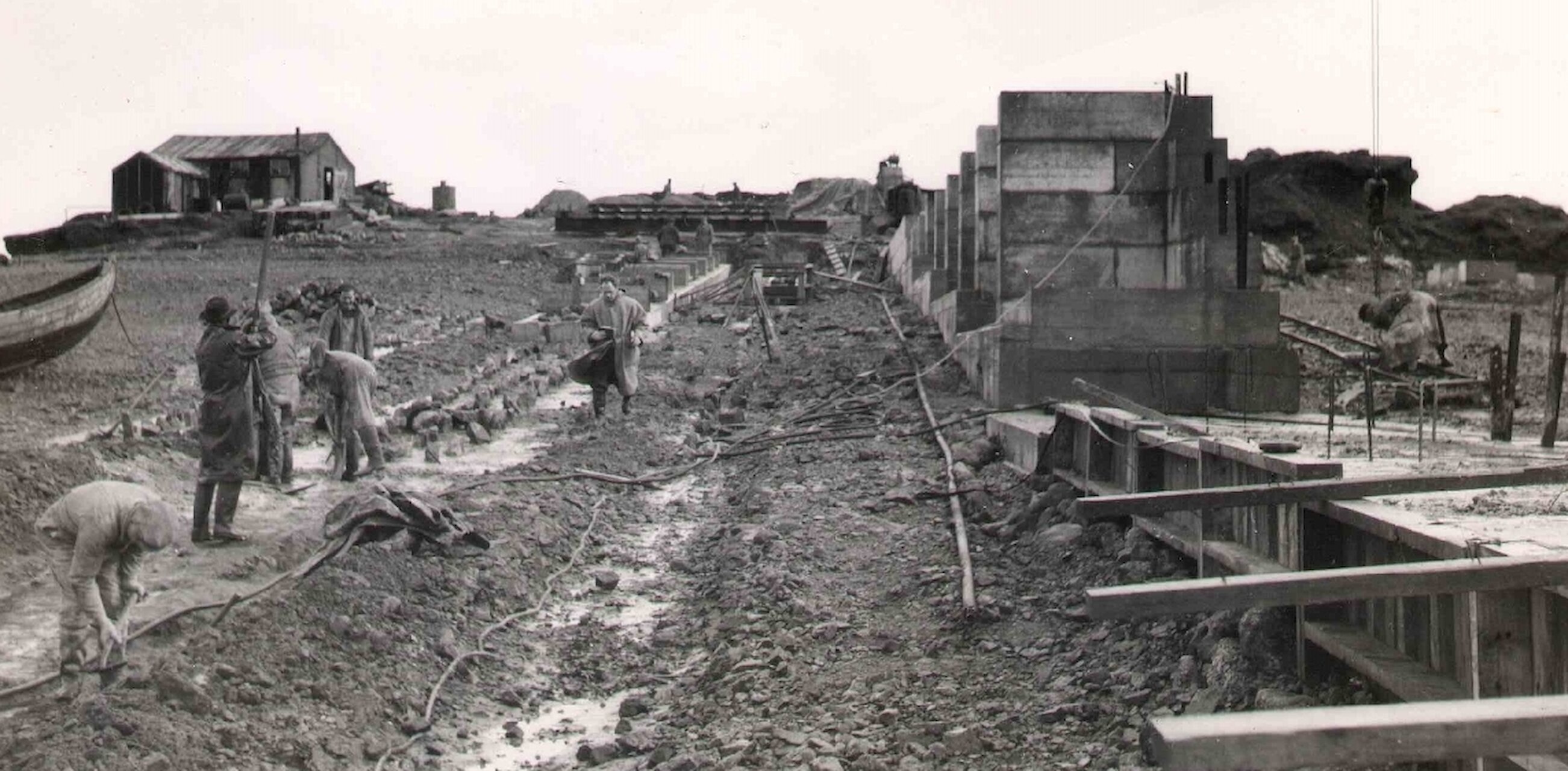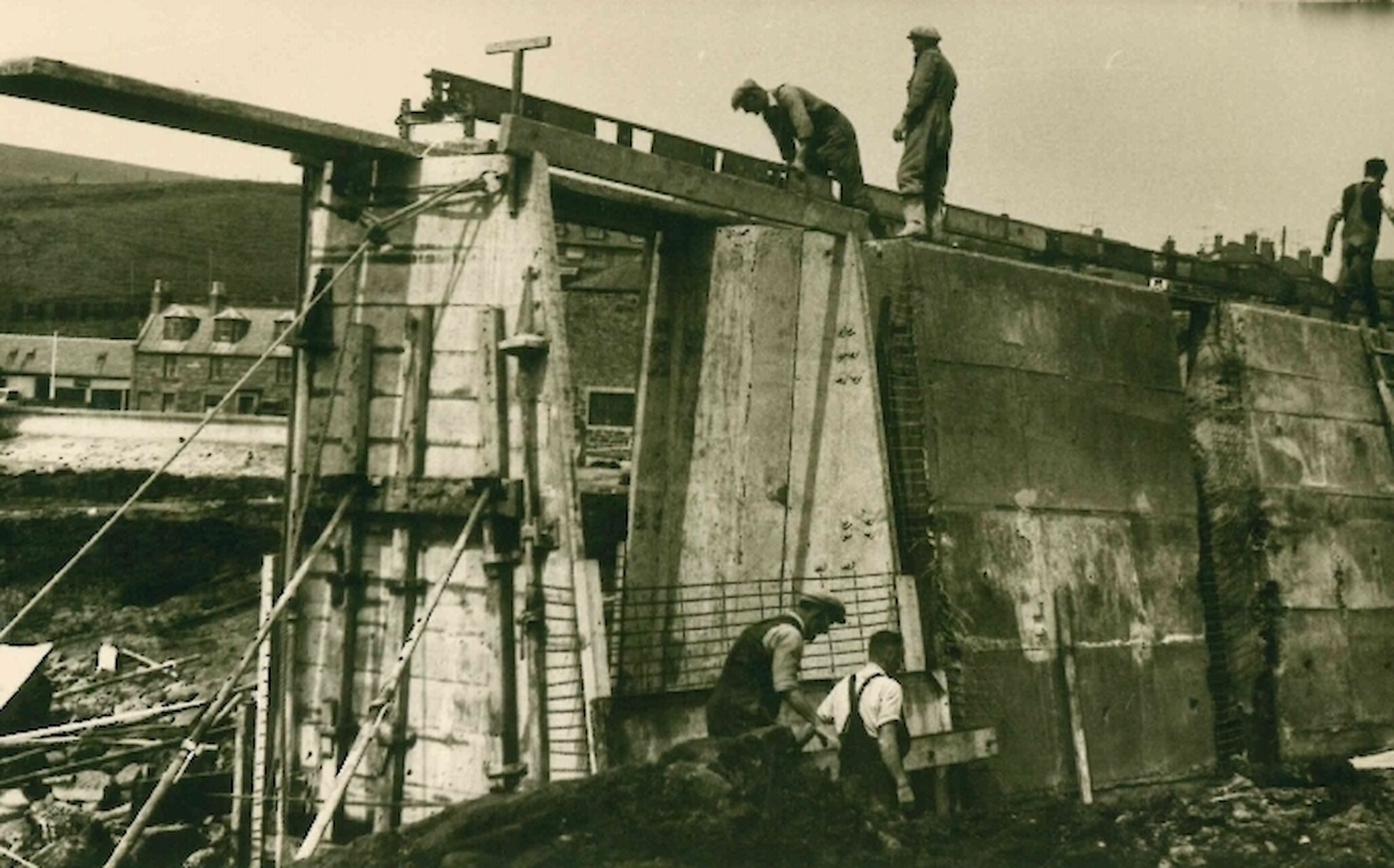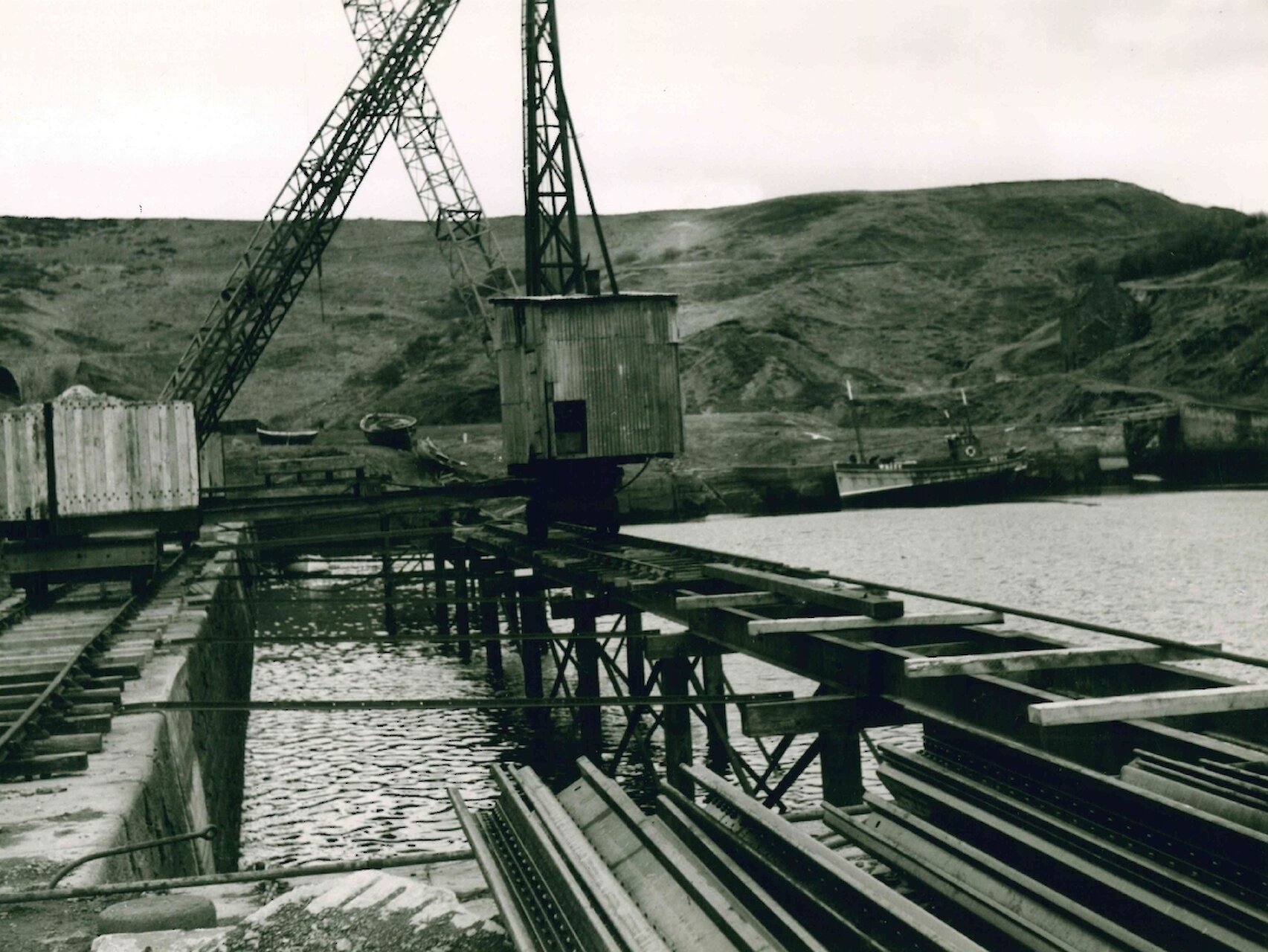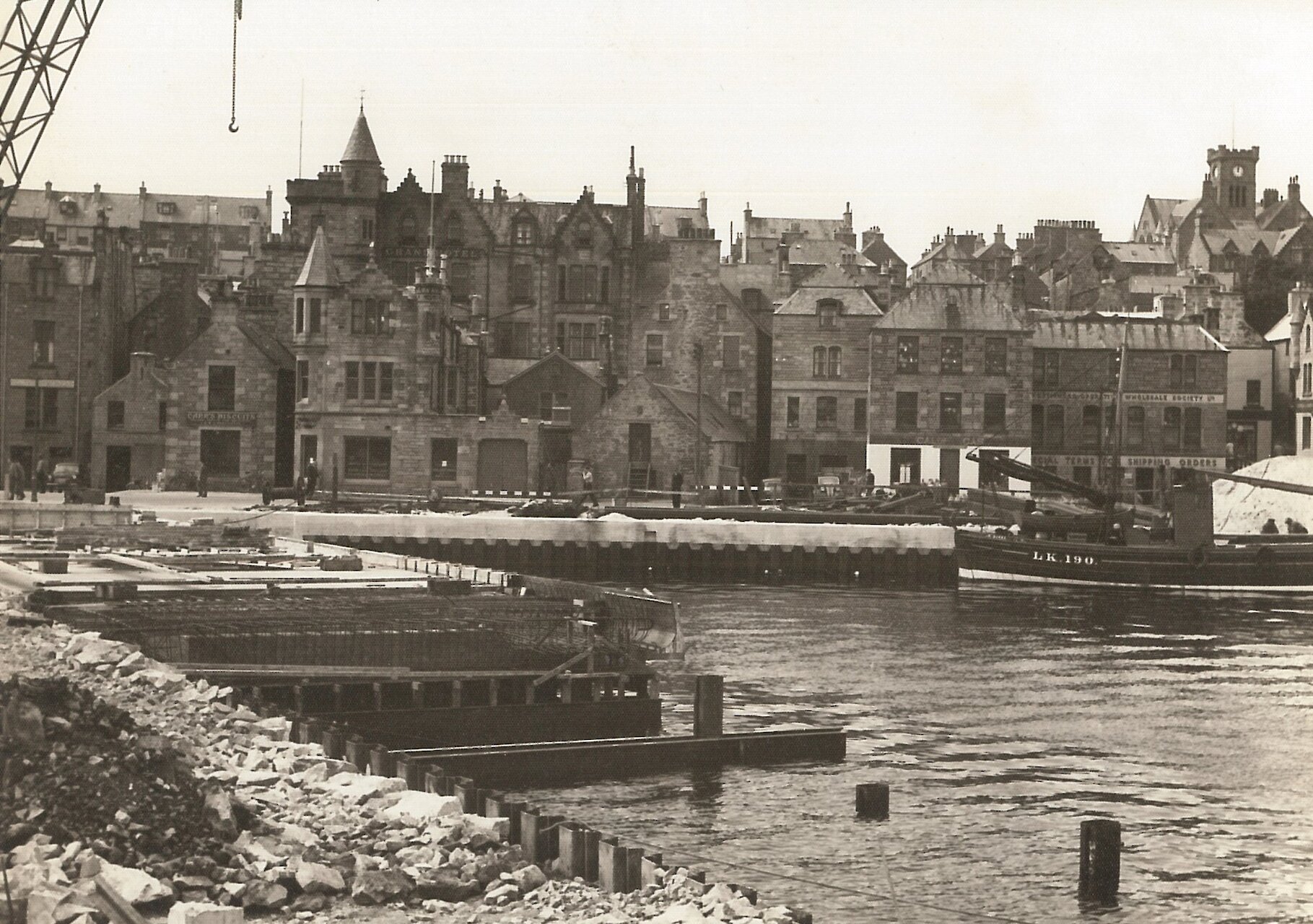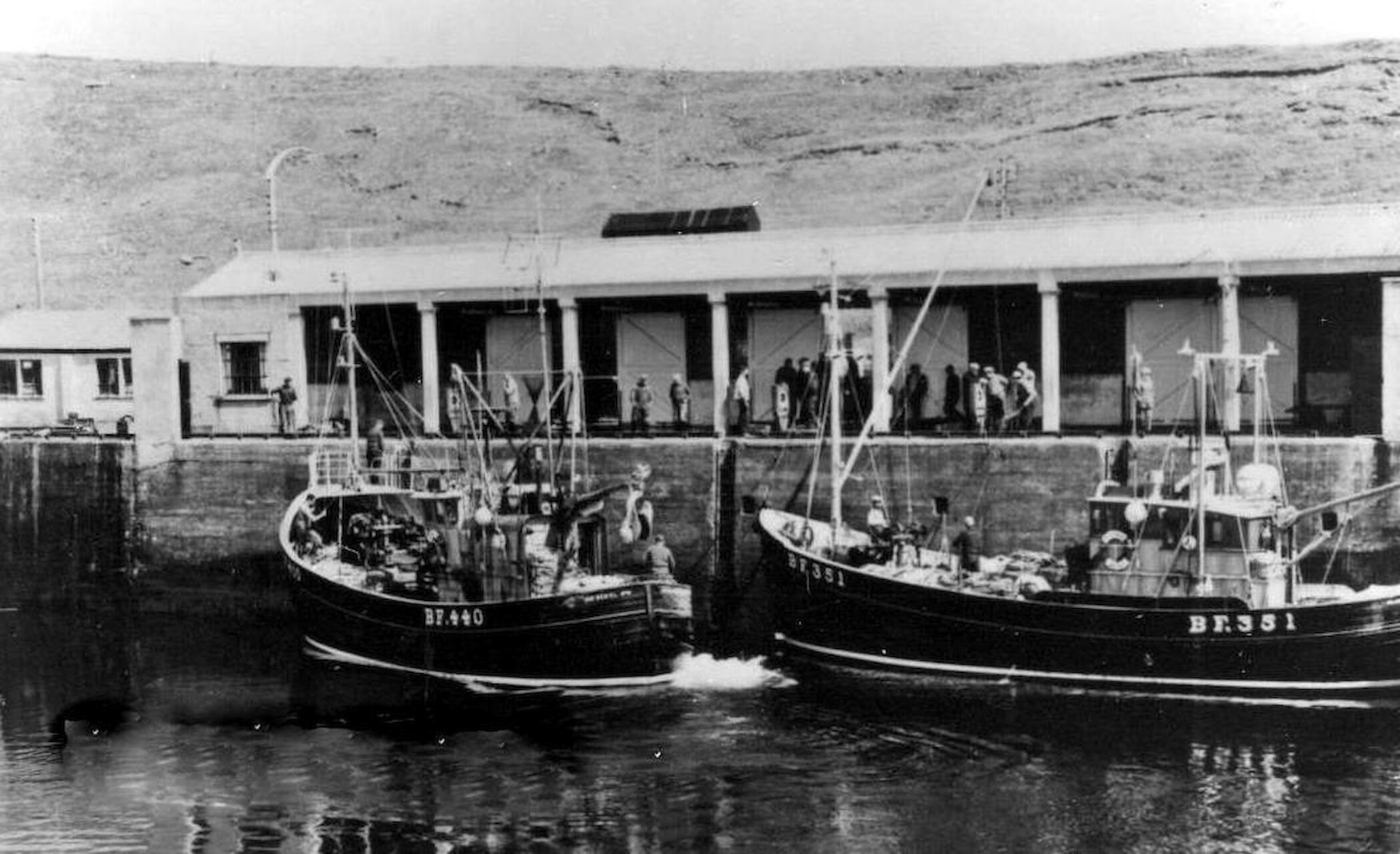The 1950s were a busy time for Arch Henderson, with a new office being opened in Inverness, headed by Malcolm Morrison.
Marine engineering projects were being conducted all around Scotland. Fishing ports in Moray and Aberdeenshire continued to provide work for the firm due to their exposed position on the North East coast, making them vulnerable to storm damage and repair and improvement works often being necessary. In the early 1950s, repair works were undertaken at Whitehills, Port Erroll, Gourdon, Gardenstown and Portknockie. A fish market was designed for Whitehills, commencing our experience to go on and continue designing fish markets to this day.
Extensive harbour works were undertaken at Lybster on the east coast of Caithness and at Stonehaven. In addition to the latter harbour works, the firm undertook river and foreshore protection works in Stonehaven. Similar foreshore protection works were also undertaken in Cullen and Findochty.
Work on the Goat Island Slipway for the Stornoway Pier & Harbour Commission, was completed in 1955. And, in Lewis, the firm, working for the Ross and Cromarty County Council (which at the time covered Lewis) designed a pier at Portnaguran, on the north easternmost point of the Eye Peninsula.
The first significant Shetland harbour project, which was first and foremost a transport pier, was the widening and extension of Victoria Pier in Lerwick. The original Victoria Pier had been completed in 1886 and allowed the steamers, which ran from Shetland to Aberdeen and Leith, to berth alongside in Lerwick for the first time. By the 1930s it was too small for the demands made upon it and the firm prepared plans to widen and lengthen it. However, WW2 intervened and the project was delayed until the mid-1950s. By then the demands had increased further still and it was a much larger project than the original 1930s plans. The firm also designed piers used by the MV Earl of Zetland in the North Isles where most of the places she served used flit boats to transfer people, cargo and livestock between the vessel and the shore – a cumbersome and often wet and hazardous operation.
The Macduff slipway received many improvements. In the 1950s it was converted from steam to electric drive, and a new cradle and new traverser carriages were provided. Between 1949 and 1952, the Princess Royal Dock in Macduff was deepened from 6 feet below mean low water springs (MLWS) to 8 feet.
